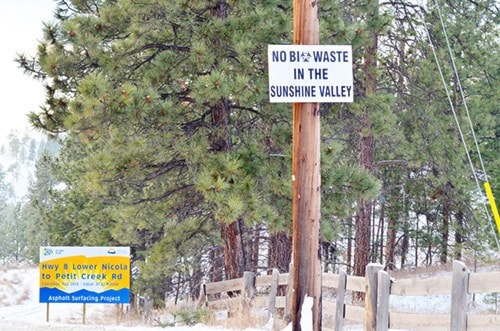Contrary to several media reports, Abbotsford and Mission aren't the source of human waste causing discontent in the Nicola Valley.
Residents in the Nicola Valley near Merritt are upset about a compost site for human waste biosolids from other communities. A contractor has been hauling waste to a property west of Merritt, where it is composted before being used as fertilizer.
A group calling itself the Friends of the Nicola Valley created a petition calling for the practice to be stopped, and the issue has prompted the Thompson-Nicola Regional District to explore how it may regulate "biosolids."
But while Abbotsford and Mission have been accused of being two of the main suppliers of the waste, the area's biosolids don't need composting and aren't taken to Merritt, according to a consultant for BioCentral, the company with the $495,000 annual contract to remove solid waste from the Joint Abbotsford Mission Environmental Systems (JAMES) Wastewater Treatment Plant on Gladwin Road.
"Up until now, there have been no biosolids of any sort shipped from Abbotsford to Merritt," said John Paul, a professional agrologist.
BioCentral operates the controversial Nicola Valley property, but the waste that is being composted and is generating so much local debate originates in West Kelowna, Paul said.
The JAMES plant produces around 7,000 tons of biosolids each year. After the waste is treated, it is considered a Class A product under the province's Organic Matter Recycling Regulations (OMRR). After going through a complex process including "de-watering" and pasteurization, the waste can be applied directly to fields, as opposed to the Class B waste from West Kelowna that must be composted before use.
Paul says the Abbotsford waste is typically taken directly to farms in the Lower Mainland and beyond, where it is applied up to a half-inch thick across fields as fertilizer.
The province regulates the use of biosolids through OMRR.
